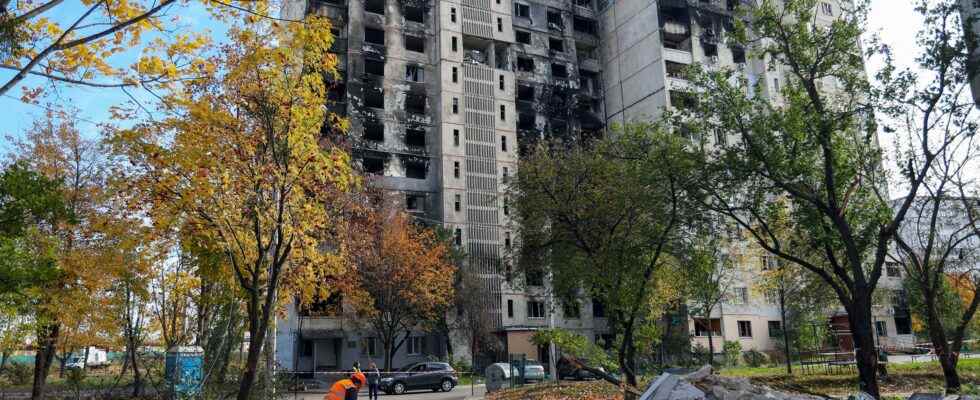In the Saltivka district, glass has become rare. Tarpaulins and wooden panels block windows blown out by explosions in this northern district of Kharkiv, the country’s second city, 30 kilometers from the border with Russia. Like the rest of the country, the inhabitants are patching up their homes with bits of string and fighting against Moscow’s best ally: General Winter. A race against time, judge Ksénia Kalmus, a florist who left her shop in the upscale districts of kyiv to help with the construction. “This summer, we renovated villages in the north of the capital, it was hot, we had time to look for sponsors,” she says. In September, his NGO Livyj Bereh, created at the start of the war, began to assess the needs in the liberated villages around Kharkiv. “The cold, the destruction… It looks like Kiev and its surroundings last April! Except that at the time, we had the hope that the summer would fix things. going from bad to worse…”
Town halls, regions, foreign sponsors, patrons, volunteers, or NGOs… all are involved at the national level in this painstaking work. As Moscow carries out a campaign of strikes on electricity infrastructure, the World Bank has raised its estimates of the reconstruction: its cost could reach 500 to 600 Billions of Euro’s.
With such immense needs, Kyiv and its partners are discussing a “Marshall Plan” for Ukraine. But contrary to the American plan which enabled the recovery of the European economy after the war, the Ukrainian authorities are working while the missiles are still raining down. In a battered economy and with declining tax revenues, it is clear that kyiv – half of whose budget is devoted to the army – will not be able to finance it. The United States, the European Union, the World Bank, the IMF, but also European and Asian countries: the sponsors are multiplying, even if it means lacking coordination.
The risk of corruption
Some voices fear that the funds will be misappropriated, as Ukraine has long been considered very corrupt. But the country today looks more like post-war Europe than Afghanistan, with functioning democratic institutions and a vibrant civil society that, since the Maidan revolution, has been monitoring possible abuses. “We continue to fight against corruption despite a genocidal war on our territory, which shows our strength,” said Olena Halushka, a member of the Anti-Corruption Action Center, a well-known Ukrainian NGO. “Progress has been spectacular,” she said, referring to the public procurement platform. Since 2016, all contracts and proposals are published online. If, since the invasion, the Prozorro platform (“transparent” in Ukrainian) has been partially closed to prevent the Russians from using this information on the battlefield, the Ukrainian authorities are working with civil society and representatives of the business community to create a similar platform for humanitarian aid and reconstruction.
“There are two parallel processes, explains Olena Halushka. Long-term reconstruction, for which you have to take the time to reflect and put in place a solid system. And immediate reconstruction, for which every day counts!” It is on this priority that the Ukrainian authorities are concentrating for their fundraising. Last July, in Lugano in Switzerland, kyiv presented a ten-year plan for reconstruction and economic recovery at 750 billion dollars which had frightened the partners. At the end of October, during a conference in Berlin, the demands were more concrete: 3 to 5 billion dollars per month for current needs. President Volodymyr Zelensky also presented a $17 billion rapid recovery plan to rebuild critical energy and transport infrastructure, as well as schools and hospitals. Finally, France and Ukraine organized a support conference on December 13 in Paris, in which Olena Zelenska, the Ukrainian first lady, took part.
“We have to start reconstruction urgently, otherwise people will leave,” warns Olena Halushka. With winter, hundreds of thousands of Ukrainians could join the 7.8 million refugees in Europe. Almost 14 million people have already had to leave their homes in Ukraine – almost a third of the population. “People want to live at home”, insists Ksénia who is desperately looking for funds. From 30 volunteers, they are only five, for lack of salaries. “When you rebuild the roof of a family, she insists, it’s not just a piece of sheet metal that you bring, you give them a reason to believe in the future.”
